This action-adventure is stuffed with digital special effects and stars Steven Houser, cardiology researcher, senior associate dean of the Lewis Katz School of Medicine at Temple University in Philadelphia, USA. Temple of Fraud is where the CGI action takes place, in fact this is the fourth Temple feature on my site. Supporting character is Houser’s former postdoc and now full professor at same medical school, Abdelkarim Sabri, originally from France. The female star is Sabri’s former postdoc and now professor of her own (at the neighbouring Jefferson University), Khadija Rafiq. Grab popcorn, curtains up, the show with fake western blots begins!

One ironical aspect is that Houser is in charge of the research integrity at his Temple medical faculty, he was in fact the person I previously notified regarding other cases: those of Domenico Pratico and Mariusz Wasik. Houser is surely also aware of the case of Antonio Giordano whose Sbarro Pizza Institute is affiliated with the Temple medicine. Needless to say, Houser never replied to me, and also needless is to philosophise whether he ever felt bothered about all that data fakery happening on his watch. Because a fish always stinks from the head, and Houser’s own research is stinky. In fact, it stinks in third generation already.
The story’s other ironic aspect is: Houser pretends to be a brave hero of research ethics. A paper was once published by Houser and Sabri, Smith et al Circulation Research 2015, titled: GDF11 Does Not Rescue Aging-Related Pathological Hypertrophy. It debunked the work of none other but one of the biggest stars of regenerative medicine, the Harvard professor Amy Wagers. This protegee of the mighty Irving Weissman is known for her “young blood rejuvenation” parabiosis discoveries, where GDF11 was shown to be a key factor of turning old mice young, the work was done in collaboration with her Harvard colleague Richard Lee. Many scientists have criticised this GDF11 research, even the FDA brought the hammer down, Wagers also had to retract two papers, one in Nature, one in Blood, while her postdoc took the full blame.
2015 was a big year for Houser, the apex of his power: he was elected president of world’s most influential cardiology society, the American Heart Association. Maybe this is why Houser and Sabri also decided to jump onto the Wager-bashing bandwagon, maybe they did not expect that she will come out on top at the end, and continue with papers in big journals and invited talks at stem cell conferences. Maybe Houser was genuinely concerned about research ethics, everything is possible. A PubPeer user described the Smith et al 2015 paper:
“This is an outstanding study. Finally a group who is not afraid of challenging the false stories behind the GDF11 hype by Lee and Wagers.”
Thing is, that even in the same journal, Houser and Sabri published what looks like some seriously falsified data. The fraud debunkers get debunked themselves now. The evidence of data manipulation was largely documented on PubPeer by Clare Francis, who arrived at Sabri and Houser via Rafiq, the former postdoc from their lab.
Let’s start with an older paper featuring all three generations, and which also includes Louis Dell’Italia from the University of Alabama in Birmingham, who is coauthor on several problematic papers by Houser, Sabri and Rafiq. As all others, this study is about cardiology, apparently the idea is that Photoshop gymnastics can help patients. Look, there is so much gel band pleiotropy going on in this join work by Sabri and Houser:
Mikhail A. Kolpakov, Rachid Seqqat , Khadija Rafiq, Hang Xi , Kennneth B. Margulies, Joseph R. Libonati, Pamela Powel, Steven R. Houser, Louis J. Dell’italia, Abdelkarim Sabri Pleiotropic effects of neutrophils on myocyte apoptosis and left ventricular remodeling during early volume overload Journal of Molecular and Cellular Cardiology (2009) doi: 10.1016/j.yjmcc.2009.08.016
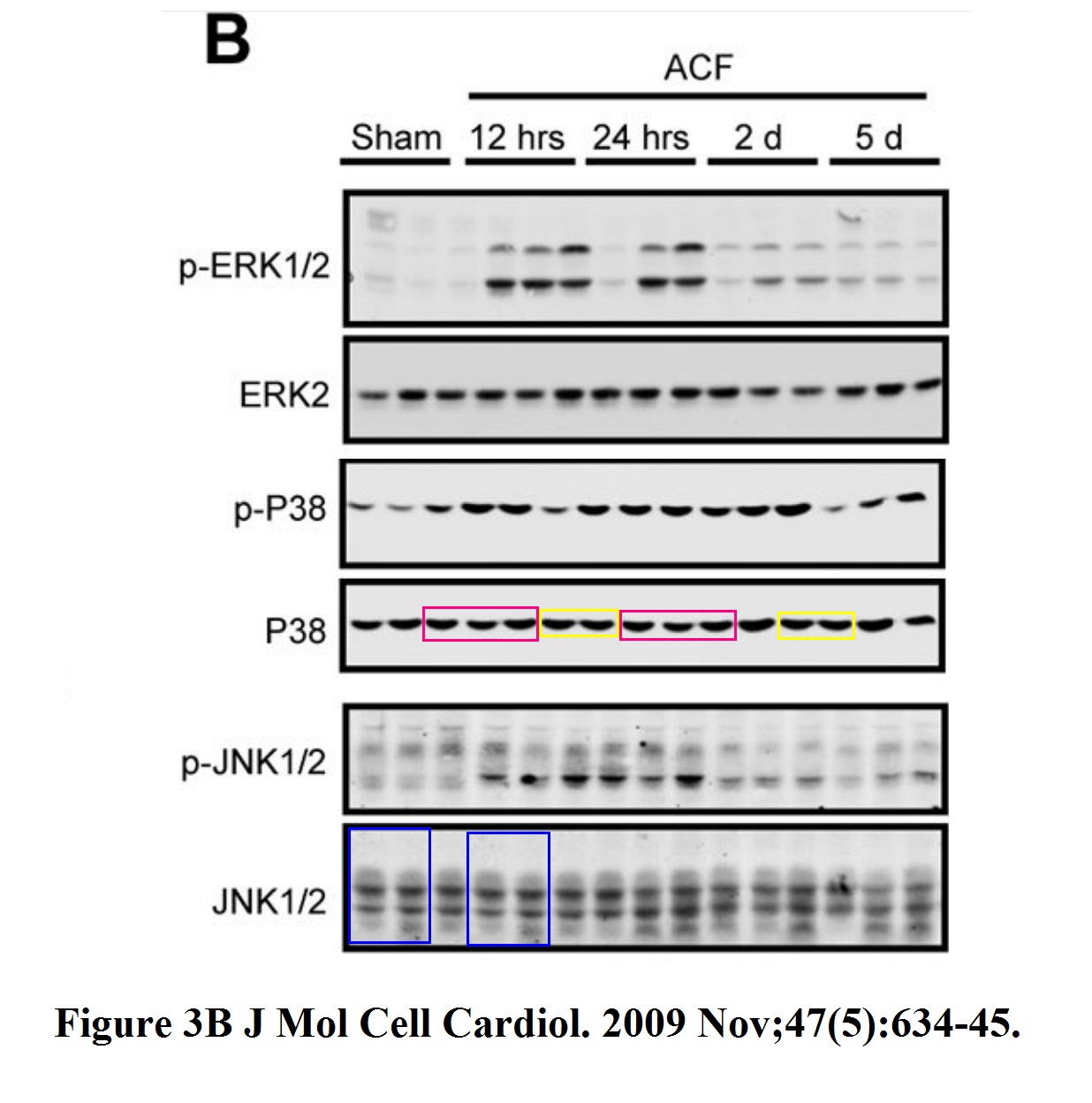
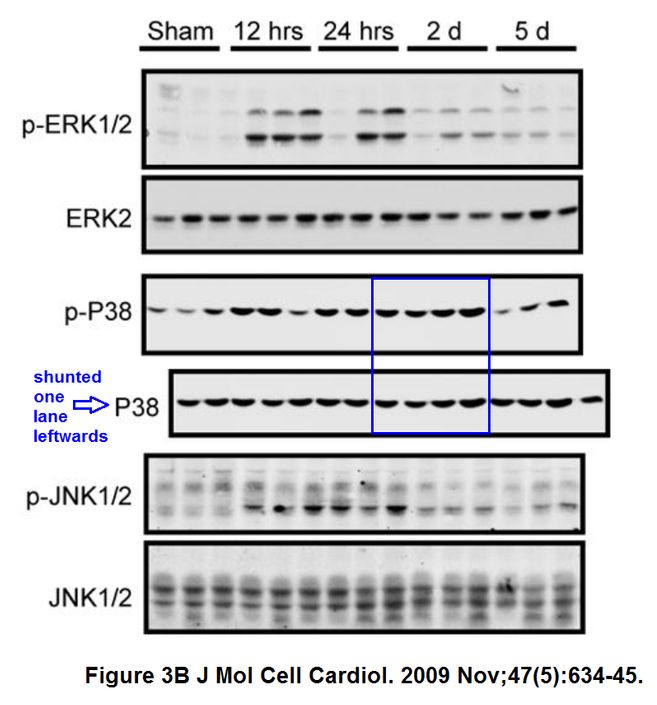
Those are copy-pasted bands, western blot results generated in Photoshop, the highlighted problems should be quite clear even for those biomedical scientists who happen to be drunk or asleep. And yet the Editor-in-Chief of that journal, Michael Regnier, bioengineering professor at University of Washington, was confused by the visual evidence in Clare Francis’ emails. He forwarded the email to a colleague with Clare Francis in cc and wrote:
“have gotten 7 of these emails – all for different papers. I am not sure what this is in regards to“
Here my suggestion, Professor Regnier: issue a correction to clarify that the conclusions are not affected. Look, other editors did that: this 2020 paper was flagged on PubPeer right when it was published, and was fixed with a correction immediately.
Xinji Guo, Mikhail A. Kolpakov, Bahman Hooshdaran, William Schappell, Tao Wang, Satoru Eguchi, Katherine J. Elliott, Douglas G. Tilley, A. Koneti Rao, Patricia Andrade-Gordon, Matthew Bunce, Chintala Madhu, Steven R. Houser, Abdelkarim Sabri Cardiac Expression of Factor X Mediates Cardiac Hypertrophy and Fibrosis in Pressure Overload JACC Basic to Translational Science (2020) doi: 10.1016/j.jacbts.2019.10.006
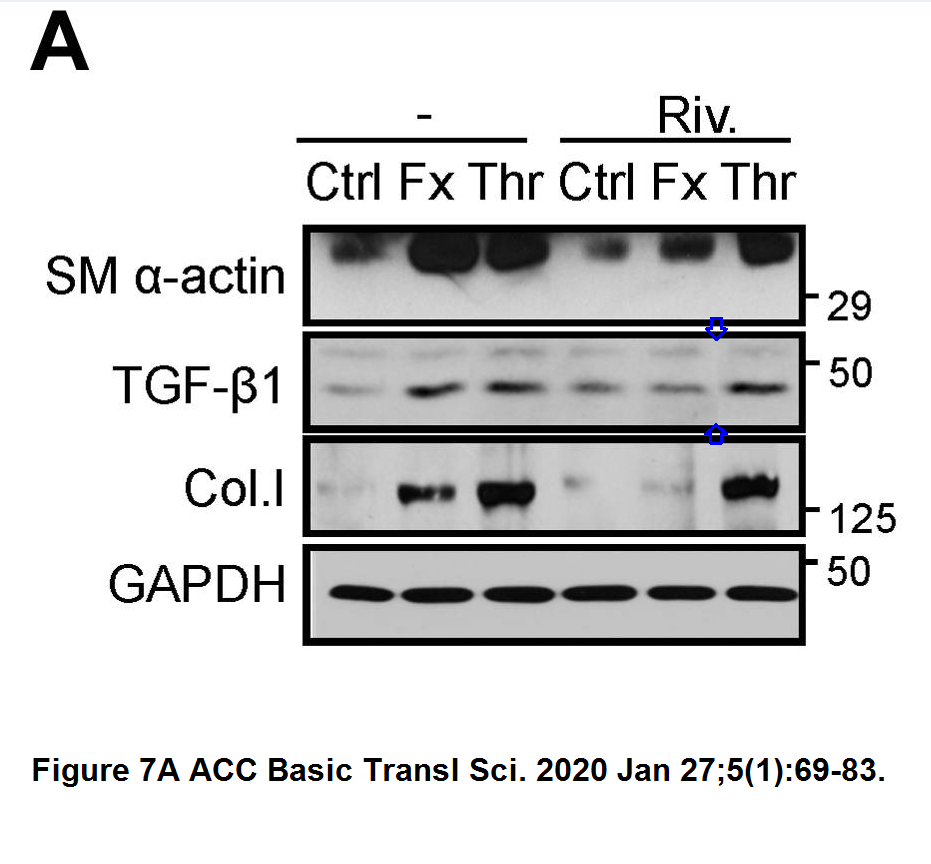
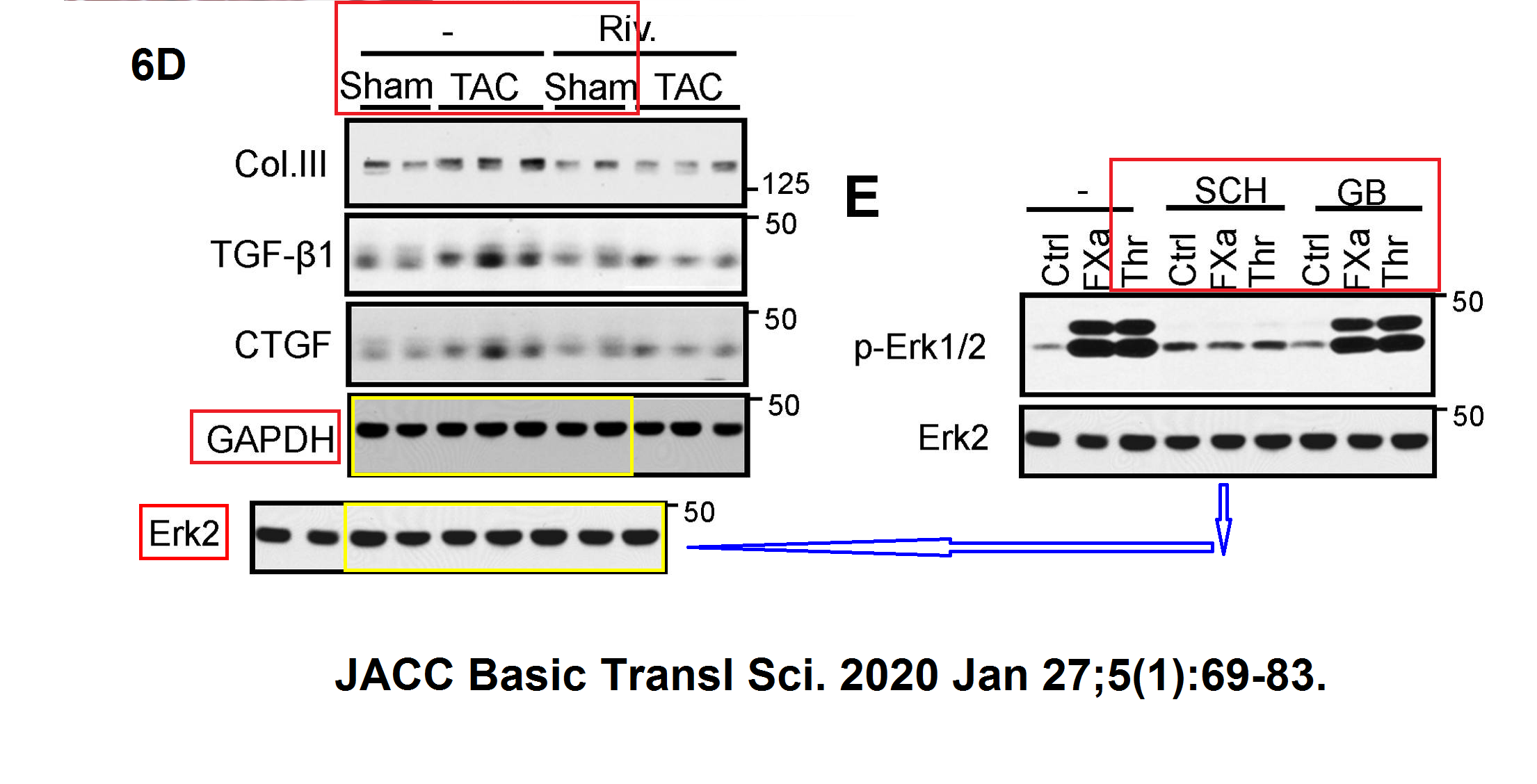
The splicing actually means someone was unhappy about the experimental result and replaced it with a more suitable one. And how one can “mistakenly” confuse an GAPD blot for ERK2 from a different experiment while cropping it, is a Temple mystery. Here another correction, recently issued in Circulation Research for a Houser paper without Sabri:
Sadia Mohsin, Constantine D. Troupes, Timothy Starosta, Thomas E. Sharp, Elorm J. Agra, Shavonn Smith, Jason M. Duran, Neil Zalavadia, Yan Zhou, Hajime Kubo, Remus M. Berretta, Steven R. Houser Unique Features of Cortical Bone Stem Cells Associated With Repair of the Injured Heart Circulation Research (2015) doi: 10.1161/circresaha.115.307362

The authors claim they copy-pasted the first image and then replaced those placeholders with correct images, except in that one case of oversight. Yet you might notice that the image was not simply copy-pasted, but its green and blue signals were boosted in the process. Such things do not happen by a mistake, unless the authors wish to claim malicious somnambulism.
Yet another paper from Houser lab in same Circulation Research (Zhang et al 2010) was corrected also in 2020, the notice went:
“an investigation by Harvard Medical School and Brigham and Women’s Hospital (BWH) has determined that there were issues with some of the data provided by the authors at that institution and reported in the Supplemental Material for the article, specifically Online Figure II. As the original primary data was generated elsewhere and included as part of the Harvard Medical School/BWH investigation, the authors performed a new set of experiments to generate new data to correct Online Figure II.“
Now, Houser was always at the Temple University, since his PhD. The only coauthors with the BWH affilaition are Annarosa Leri and Jan Kajstura, long-term collaborators and partners in fraud of the infamous Piero Anversa, discoverer of non-existent heart stem cells (I was btw the first to find out where Anversa went after Harvard showed him the door: Cardiocentro Ticino in Switzerland). This is to say, the only reason Houser had to correct his paper was that wretched Anversa mega-investigation in Harvard. Obviously the experimental data in Zhang et al 2010 was likely found by the Harvard investigation to be fabricated, but now the cruel irony: the blame was attributed to Kajstura and Leri! The last author Houser and his coauthor and protege Sabri were declared hapless victims of their Harvard colleagues’ treacherous misconduct. No worries, the Temple team swiftly and exactly reproduced those 10 year old fictional results, and the problematic figure was replaced. In fact, back in 2014, when Anversa’s claims of heart stem cells started to become a serious problem or irreproducibility, Hauser was quoted in Science:
““We all hype our work,” says Steven Houser, a cardiac muscle biologist at Temple University in Philadelphia, Pennsylvania. “We want to tell people our work is important. These patients, many of them coming to enroll in these trials, they have no other hope.” And, Houser suggests, in this case “the hype got ahead of the science.“
What does one call those things found in Houser’s own papers? Hype? Or something else?
Cardiology is unfortunately a rotten research area, even without Anversa and his gang. Where there is money, there is fraud, and money-wise cardiology is up there with cancer research, in fact it can be worse. At least oncologists don’t advice their patients to eat chocolate as medicine, like some very senior cardiologists do.
The rules are bent and broken, especially since every single paper can mean millions in cash for its authors, from research funders and industry. Especially papers with stem cells and regenerative medicine, the money potential there is really mind-boggling. Maybe this is why the following paper from Houser lab in Circulation Research was stealthily corrected without any notice at all.
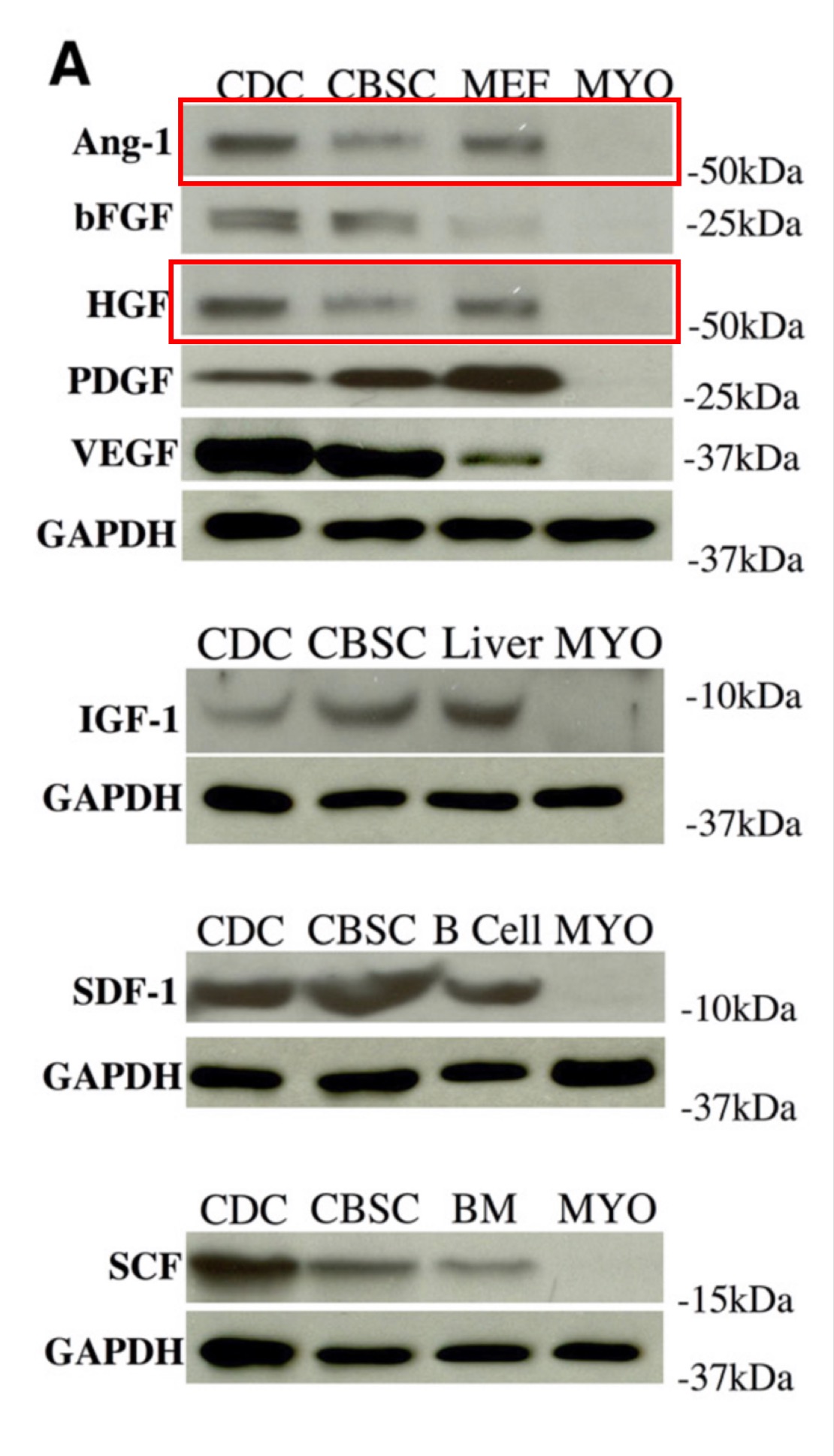
Jason M. Duran, Catherine A. Makarewich, Thomas E. Sharp, Timothy Starosta, Fang Zhu, Nicholas E. Hoffman, Yumi Chiba, Muniswamy Madesh, Remus M. Berretta, Hajime Kubo, Steven R. Houser Bone-derived stem cells repair the heart after myocardial infarction through transdifferentiation and paracrine signaling mechanisms Circulation Research (2013) doi: 10.1161/circresaha.113.301202
The evidence was posted on PubPeer in October 2020, Houser notified by email.
Elisabeth Bik noticed on 11 December 2020:
“Strangely, the current version of the paper has a slightly different version of this figure where the HGF panel has been replaced by another panel. Yet, the paper does not have an official correction.“
This paper cannot have an official correction, dear Elies, because stem cell cardiology is literally a violent gold run with robberies and all, where they are that close to use actual firearms and dynamite. Next to Anversa, there was the infamous and litigious Bodo Strauer of University of Düsseldorf in Germany (I did my PhD there just when Strauer was “curing” people!), more recently we have the Nobel Prize winner Sir Martin Evans and his Celixir business with heart injections of some magic blood cells. And those are just the biggest names off the top of my head.
Update: I wrote to Hauser, Sabri and Rafiq on 6 January 2020, asking them to comment on the PubPeer criticism of their papers. I never received a reply, but the next day, on 7.01.2020, the journal issued a correction for that paper, which “does not alter the interpretation of the Figure nor that of the article“.
But this following Circulation Research paper by Houser and Sabri is uncorrectable, so best to look away, whistle, and wait for others to forget it.
Scott M. MacDonnell, Jutta Weisser-Thomas, Hajime Kubo, Marie Hanscome, Qinghang Liu, Naser Jaleel, Remus Berretta, Xiongwen Chen, Joan H. Brown, Abdel-Karim Sabri, Jeffery D. Molkentin, Steven R. Houser CaMKII Negatively Regulates Calcineurin–NFAT Signaling in Cardiac Myocytes Circulation Research (2009) doi: 10.1161/circresaha.109.194035
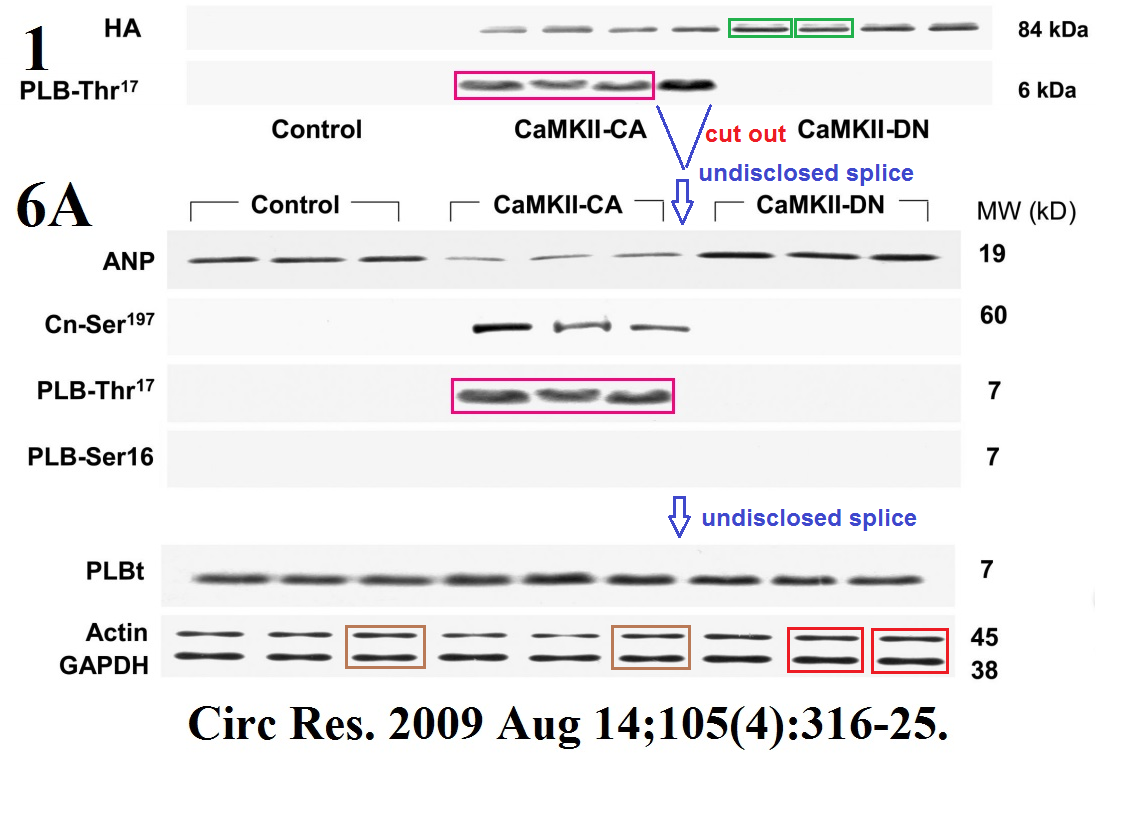
Recently, the penultimate author Jeffery Molkentin of Cincinnati Children’s Hospital even tried to save Anversa’s and Strauer’s legacy by claiming in Nature (Vagnozzi et al 2020) that bone marrow cells injected into the heart don’t have to be of the stem cell kind to do their healing work. Can Molkentin, or Houser for that matter, need a retraction now? Of course not. Forget you ever saw this paper and its fake gels.
Update: Both Jeffery Molkentin and Ronald Vagnozzi commented below (here and here), they disagree with my interpretation of their Nature publication, which I mistakenly attributed to 2018 instead of 2020. So far, no opionion on the MacDonnell et al 2009 blots.
There are of course more Sabri-Houser copro-ductions which earned the former a professorship at Temple and the latter probably lots and lots of cash from funding agencies and pharma industry. Here, ischaemic hearts, cured with Photoshop:
Khadija Rafiq, Mikhail A. Kolpakov, Rachid Seqqat, Jianfen Guo, Xinji Guo, Zhao Qi, Daohai Yu, Bhopal Mohapatra, Neha Zutshi, Wei An, Hamid Band, Archana Sanjay, Steven R. Houser, Abdelkarim Sabri c-Cbl inhibition improves cardiac function and survival in response to myocardial ischemia Circulation (2014) doi: 10.1161/circulationaha.113.007004

No paper by Rafiq and Sabri can ever be a disappointment. Houser can be proud. Look at this:
Khadija Rafiq, Jianfen Guo, Liudmila Vlasenko, Xinji Guo, Mikhail A. Kolpakov, Archana Sanjay, Steven R. Houser, Abdelkarim Sabri c-Cbl ubiquitin ligase regulates focal adhesion protein turnover and myofibril degeneration induced by neutrophil protease cathepsin G Journal of Biological Chemistry (2012) doi: 10.1074/jbc.m111.307009
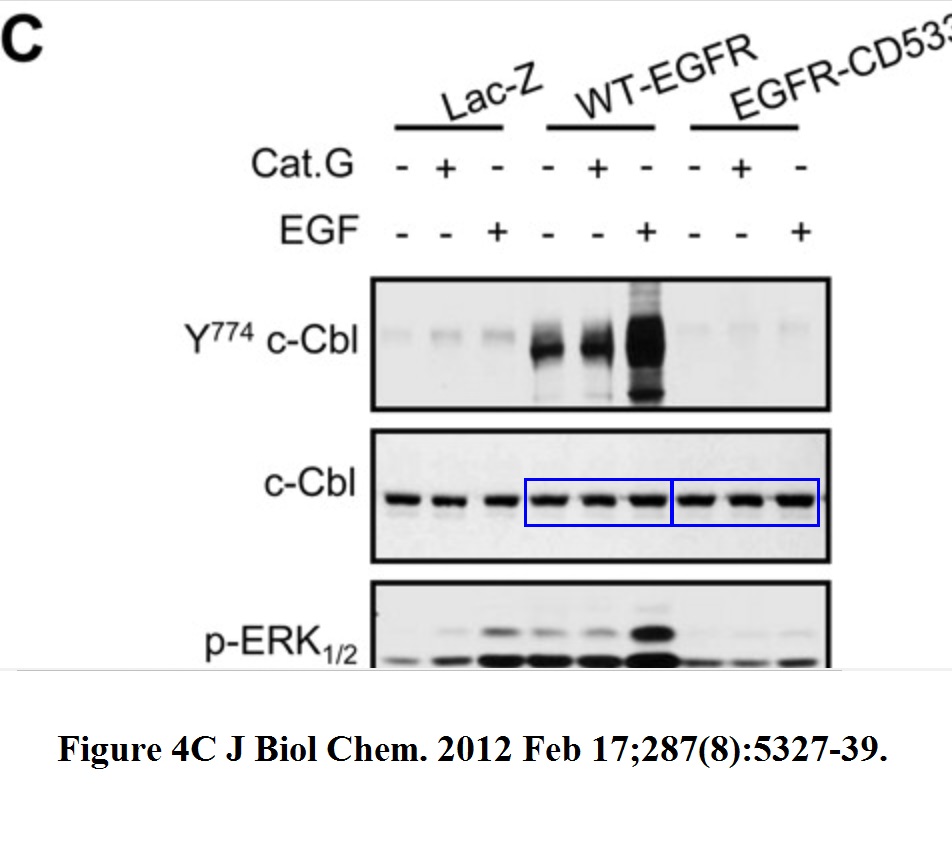


Finally, here a very new paper, everyone is on board, plus their former postdoc Rachid Seqqat, now professor at the University of Armed Forces of Equador:
Rachid Seqqat, Xinji Guo, Khadija Rafiq, Mikhail A. Kolpakov, Jianfen Guo, Walter J. Koch, Steven R. Houser, Louis J. Dell’italia, Abdelkarim Sabri Beta1-adrenergic receptors promote focal adhesion signaling downregulation and myocyte apoptosis in acute volume overload Journal of Molecular and Cellular Cardiology (2012) doi: 10.1016/j.yjmcc.2012.05.004
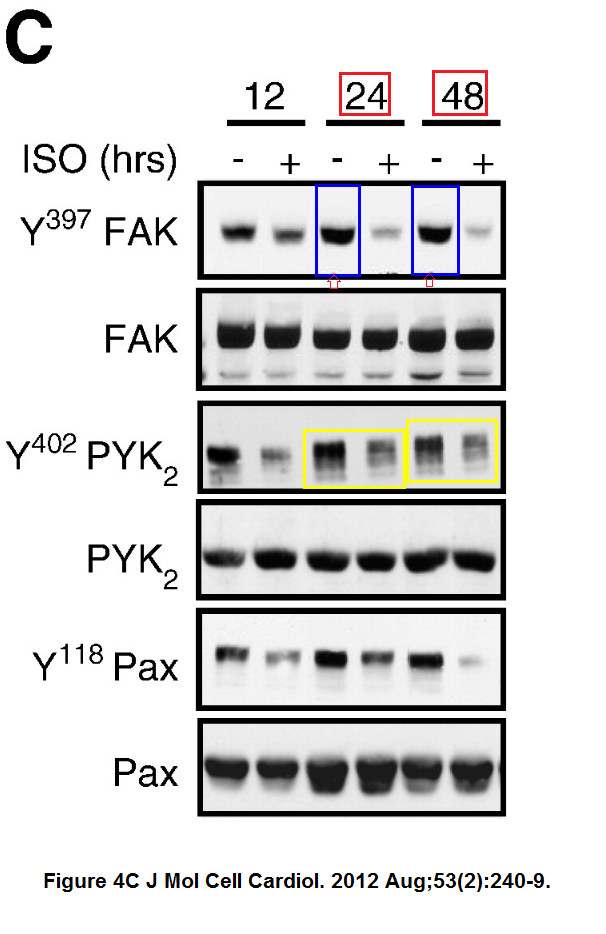

Now that you saw so many papers by Khadija Rafiq, you might think well, poor thing, she needed to put up with all that while working under Sabri and Houser, and now that she achieved her professorship at the Jefferson University, surely she stopped, right? Well, Rafiq has her own PubPeer record, in fact it was one of her fabricated papers which eventually led Clare Francis to Sabri and Houser. First, some Rafiq masterpieces with Sabri:
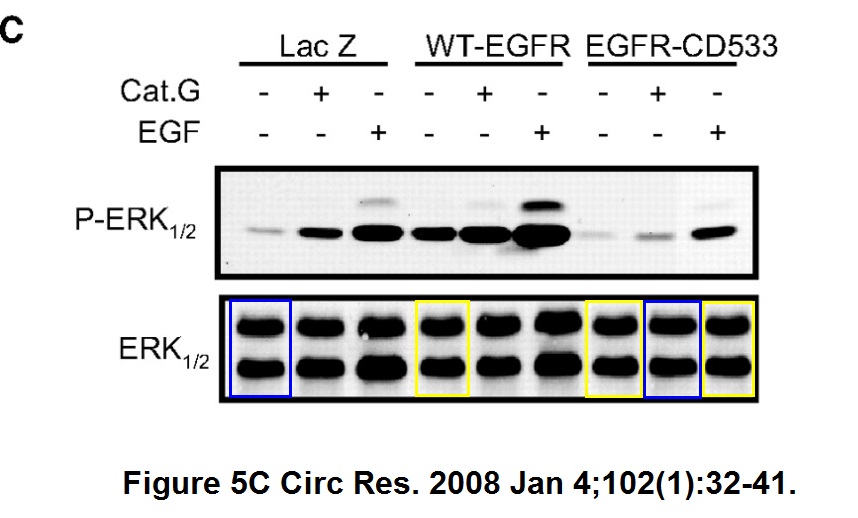
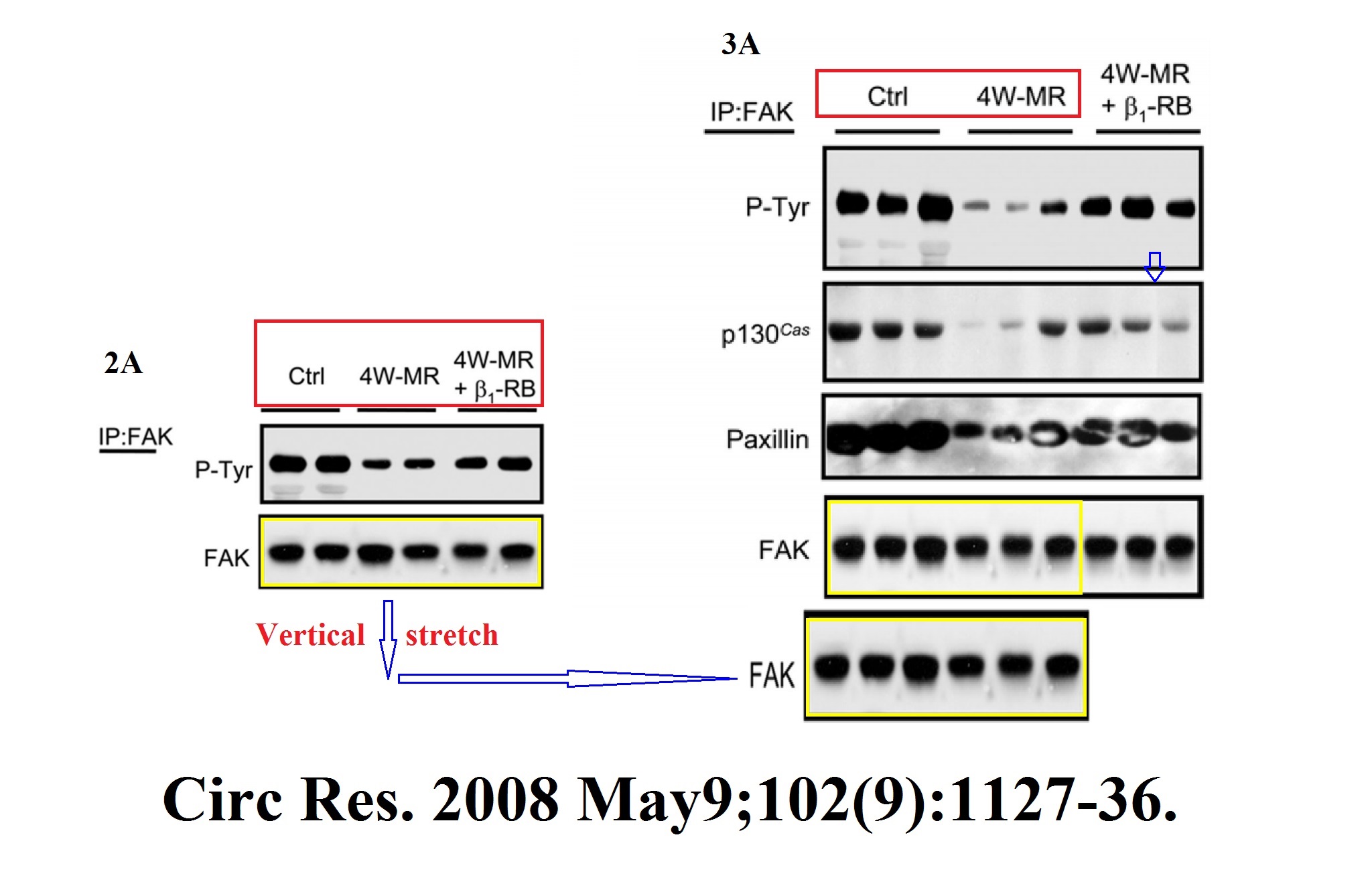
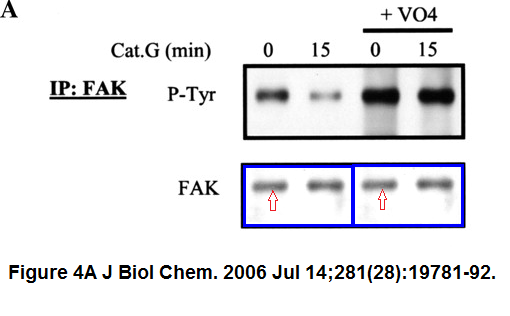
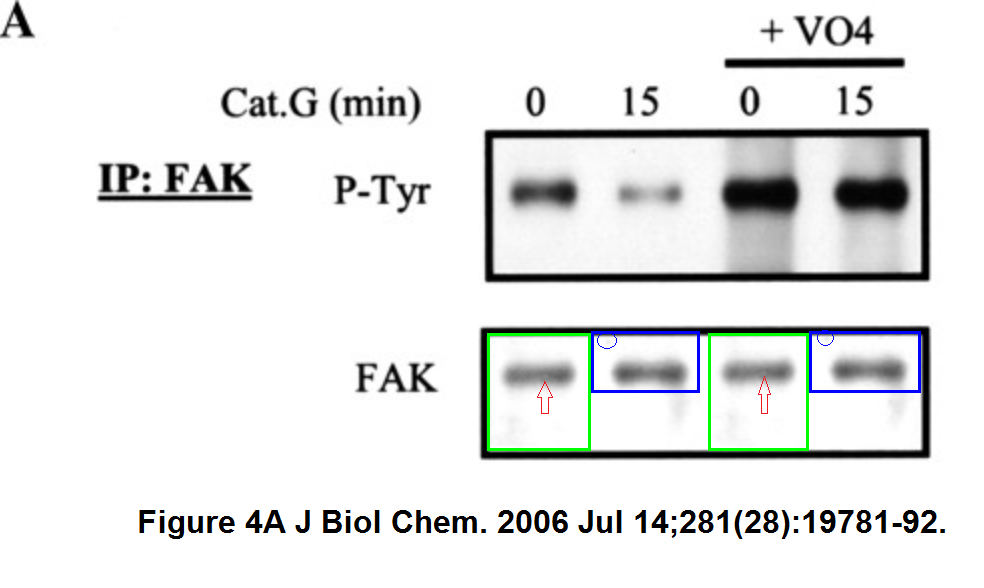
And this, more recent, with newly appointed professor Rafiq as last author:
Mikhail A Kolpakov, Kunal Sikder, Amrita Sarkar, Shaswati Chaki, Sanket K Shukla, Xinji Guo, Zhao Qi, Carlos Barbery, Abdelkarim Sabri, Khadija Rafiq Inflammatory Serine Proteases Play a Critical Role in the Early Pathogenesis of Diabetic Cardiomyopathy Cellular Physiology and Biochemistry (2019) doi: 10.33594/000000190

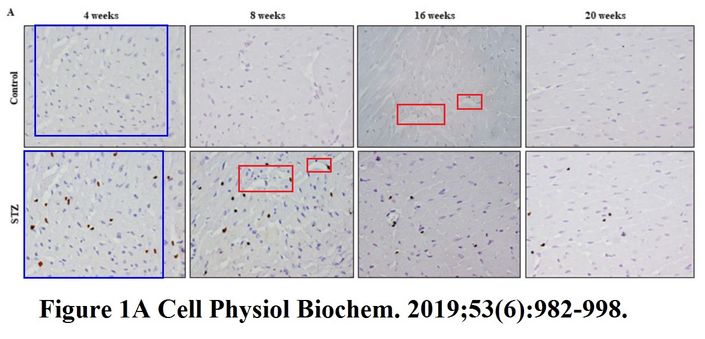
These offendingly fake figures were swiftly replaced with a recent correction:
“the authors confirm that all of the results and conclusions of the article remain unchanged”
But now have a look at this fraud orgy which Rafiq published in her own right as Jefferson University professor without Sabri or other usual Temple suspects to blame. Brace yourself.
Amrita Sarkar, Sanket K. Shukla, Aseel Alqatawni, Anil Kumar, Sankar Addya, Alexander Y. Tsygankov, Khadija Rafiq The Role of Allograft Inflammatory Factor-1 in the Effects of Experimental Diabetes on B Cell Functions in the Heart Frontiers in Cardiovascular Medicine (2018) doi: 10.3389/fcvm.2018.00126

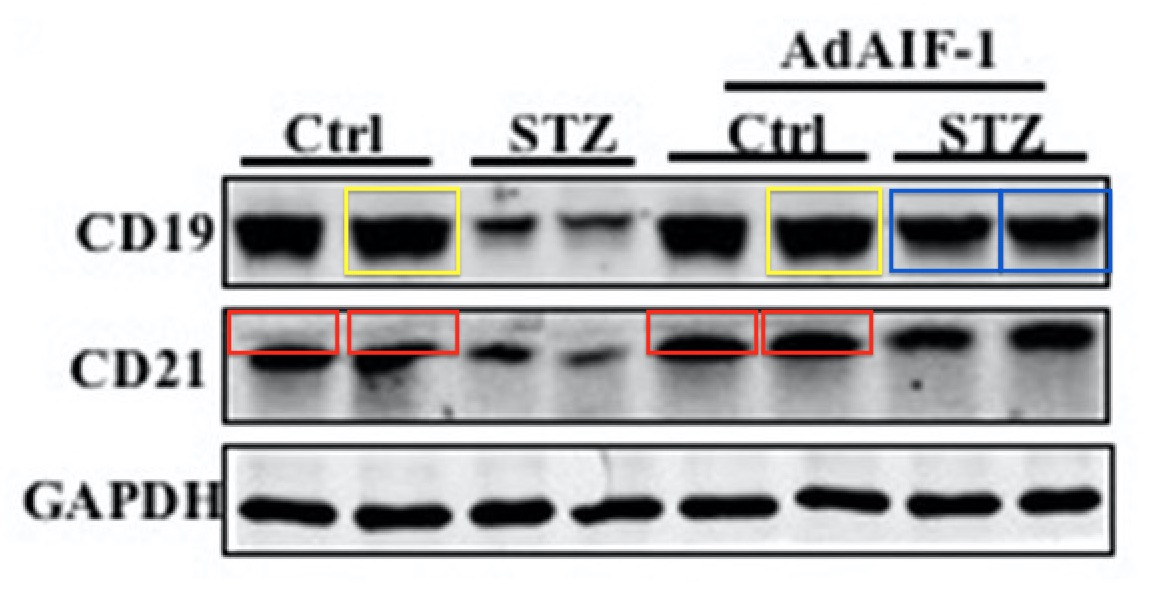
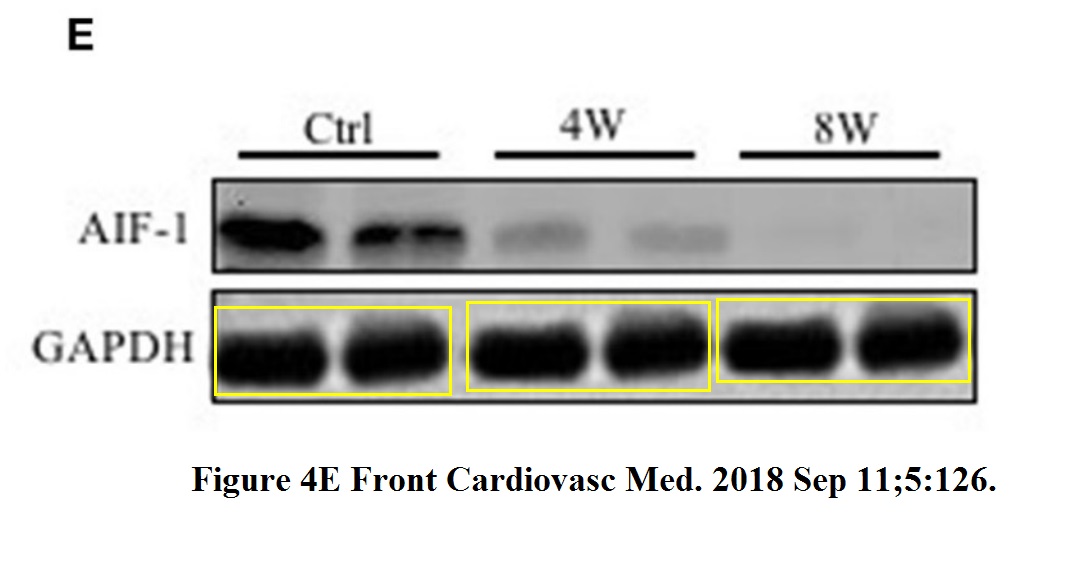
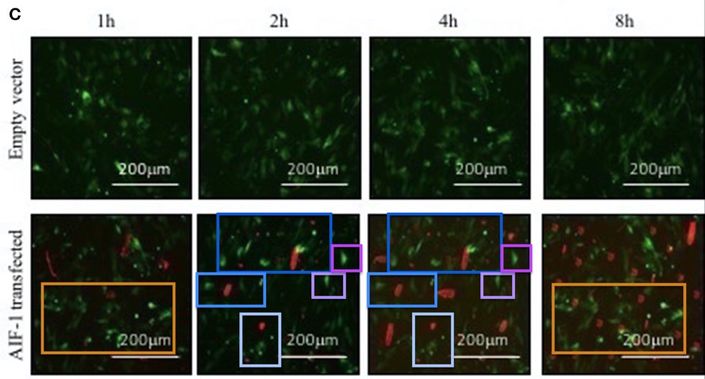
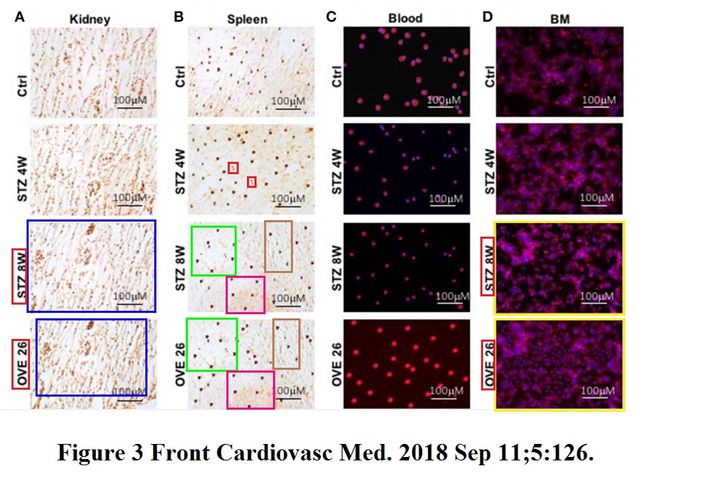
That being Frontiers, expect a beautiful mega-correction, with conclusions not affected.
This is how bad science evolves with each generation of an academic dynasty. We saw it with Donath-Maedler-Ardestani transition, and here it is again. At the Temple University, it started relatively modestly with Houser (F0, although who taught him?), got worse with Sabri (F1) and became an utter Photoshop insanity with Rafiq (F2). I shudder to imagine what kind of science Rafiq’s own mentees will produce.
Update 11.01.2020:
Michele Masucci, Vice-President for Research at Temple University acknowledged receiving my notification about the issues above and stated:
“Dr. Houser is not responsible for examining research misconduct at Temple University.“
Update 13.02.2020
On 6 July 2017, this statement was published in the journal Circulation Research, published by the American Heart Association (AHA), which president until July was Steven Houser, a coauthor of this white paper:
Thomas Eschenhagen , Roberto Bolli , Thomas Braun , Loren J. Field , Bernd K. Fleischmann , Jonas Frisén , Mauro Giacca , Joshua M. Hare , Steven Houser , Richard T. Lee , Eduardo Marbán , James F. Martin , Jeffery D. Molkentin , Charles E. Murry , Paul R. Riley , Pilar Ruiz-Lozano , Hesham A. Sadek , Mark A. Sussman , and Joseph A. Hill
Cardiomyocyte Regeneration: A Consensus Statement
Circulation (2017) doi: 10.1161/CIRCULATIONAHA.117.029343
It advertised for cell therapies for heart regeneration and cited the (now discredited as fraudulent) research by Piero Anversa and his colleague Roberto Bolli (one of the co-authors of the white paper). Some authors (Eschenhagen, Fleischmann, Frisen, Hare, Lee, Marban, Murry, Riley, Ruiz-Lozano and Sussman) declared their financial conflicts of interest (COI), which makes sense since their position paper advertises for cell therapies. Other authors, including Houser stated:
“The other authors report no conflicts.“
In September 2017, Houser’s lab published a paper in same Circulation Research, Sharpill et al, Cortical Bone Stem Cell Therapy Preserves Cardiac Structure and Function After Myocardial Infarction, (2017), where the following COI was declared:
“S.R. Houser is a named inventor on intellectual property filings that are related to the subject of this paper. In addition, S.R. Houser is a co-founder, scientific advisor, and holds equity in Myocard Therapeutics, LLC, a biotech start-up which will license S.R. Houser’s cortical bone cell technology from Temple University for commercial development and clinical trials.“
So why was this COI not declared in July’s white paper? Did the company not exist yet? Nope, it was founded in March 2017:


Donate!
If you are interested to support my work, you can leave here a small tip of $5. Or several of small tips, just increase the amount as you like (2x=€10; 5x=€25). Have a heart, I do so much for cardiology!
€2.00


What do some of these titles even mean? They are so obscure that it is difficult to understand what the paper is trying to show. Do you think this is intentional?
LikeLike
Wow Leonid, did this story mis-represent the facts related to my involvement (Jeffery Molkentin)
Your claim
“Recently, the penultimate author Jeffery Molkentin of Cincinnati Children’s Hospital even tried to save Anversa’s and Strauer’s legacy by claiming in Nature (Vagnozzi et al 2018) that bone marrow cells injected into the heart don’t have to be of the stem cell kind to do their healing work.”
You do not even have the correct reference on this one, and your treatment of my involvement completely inaccurate statement and a mis-representation. In fact, our 2014 paper (van Berlo et al, 2014, Nature) was attributed to starting the downfall of the Anversa group and related laboratories that reported cardiac stem cells as being regenerative. In our 2014 paper we showed for the first time with genetic lineage tracing that cKit stem cells did not regenerate the infarcted myocardium. We also showed with lineage tracing that Sca-1 stem cells similarly were incapable of regenerating the heart as previously claimed (Vagnozzi et al., 2018, Circulation).
The paper I believe you are referring to above was Vagnozzi et al., 2020, Nature (not 2018). This paper also helped debunk the previous claims of Anversa and colleagues. We showed that dead cell debris and chemical activators of the TLR system were just as good as injecting living stem cells in providing a low degree of functional improvement to the heart after MI, by inducing an innate immune response that helped with healing. There are countless studies showing that the immune response is needed for proper healing. Again, you are mis-representing our work to make your greater point.
Please correct how you are referring to my involvement, as you actually have it completely opposite. My laboratory was on the other side of all this, helping to set the record start on the previous inaccurate claims of the Anversa group and his cronies laboratories.
Have we not we had enough of loose or incorrect facts these past few years in our country and world? An article such as yours needs to be adherent to facts and properly using them, especially if you are going to make defamatory lines of argumentation that negatively impact the careers of scientists. The onus should be on you to be accurate given your type of accusatory reporting
LikeLike
Dear Jeffery,

first of all, thank you for commenting on my site.
As you describe your work, you do say that Piero Anversa’s therapeutic results are correct, even if not due to stem cell activity, but to other factors you propose. This can be interpreted as saving his legacy, ie. that his therapy works even if his theory is wrong or fraudulent (you don’t discuss Bodo Strauer at all, for some reason).
I will be happy to update that bit with a link to your comment, but maybe you would like to form an opinion on this paper MacDonnell et al 2009 first? Don’t you agree this should be retracted?
LikeLike
It’s also worth pointing out here that the therapeutic results of the Anversa papers were attributed to substantial remuscularization of the heart by the stem cells turning into cardiac myocytes. Work from us showed these proposed stem cells did not make new myocytes and only under the correct conditions could direct injection of these cells lead to a slight benefit in cardiac function (Vagnozzi et al., 2020, Circulation). The goal of Vagnozzi et al., 2020, Nature was to understand why under select conditions the injection of “stem cells” after acute infarction injury could benefit rodent models and some pre-clinical large animal models. This paper showed that injection of stem cells is mechanistically irrelevant on its own, which definitely was against Anversa and all the stem cell regeneration laboratories, and even all of the human heart failure clinical trials with stem cells. We showed the mechanism was indirect (not even needing stem cells) and through the immune response (macrophages driving selective healing by regulating the activity of cardiac fibroblasts during infarct healing). I do not believe you have accurately assessed the facts here in making your conclusions.
LikeLike
Hi Ronald, thank you for commenting here.
I posted links to yours and Jeffery’s comment in the relevant text section.
Still I am not sure what you disapprove of. You do explain here why Anversa’s (and Strauer’s, why is everyone avoiding to mention him?) method was beneficial after all, even though it was not the stem cell effect, but an immune effect which you say is “facts” and did deliver “infarct healing” (your own word choice).
Basically, to me this means that none of the patients was damaged by either Anversa or Strauer, in fact they were healed after all. The rest (about what the molecular mechanistm was) is as the saying goes, academic.
I still hope Jeffery has an opinion about his own paper from 2009 though.
LikeLike
Jeffery D. Molkentin I do not hold you responsible, but could you have word with Ying Xia about this paper?
Mol Cell Biol. 2005 Jan;25(1):60-5. doi: 10.1128/MCB.25.1.60-65.2005.
MEKK1 transduces activin signals in keratinocytes to induce actin stress fiber formation and migration
Lin Zhang 1, Maoxian Deng, Ranjani Parthasarathy, Lei Wang, Maureen Mongan, Jeffery D Molkentin, Yi Zheng, Ying Xia
Affiliation
1Department of Environmental Health, University of Cincinnati, 123 E. Shields St., Cincinnati, OH 45267-0056, USA.
PMID: 15601830 PMCID: PMC538759 DOI: 10.1128/MCB.25.1.60-65.2005
Some of the data are problematic. Especially figures 3A and 4A.
https://pubpeer.com/publications/031AF3103536BB0834E78D4ECF265A
Some of the data seem to have leaked into another paper, which has Michael Karin as
co-author.
EMBO J . 2003 Sep 1;22(17):4443-54. doi: 10.1093/emboj/cdg440.
A role for MEK kinase 1 in TGF-beta/activin-induced epithelium movement and embryonic eyelid closure
Lin Zhang 1, Wei Wang, Yasuhito Hayashi, James V Jester, David E Birk, Min Gao, Chia-Yang Liu, Winston W-Y Kao, Michael Karin, Ying Xia
Affiliation
1Department of Environmental Health, University of Cincinnati Medical Center, Cincinnati, OH 45267, USA.
PMID: 12941696 PMCID: PMC202382 DOI: 10.1093/emboj/cdg440
LikeLike
Dear Leonid, Why the question on the unrelated paper, are you coming after me? I have nothing to do with this paper other than giving someone at my institution an adenovirus 15 years ago. Same with the 2009 paper from the Houser laboratory in which I provided them with a transgenic Mouse model and nothing more. Is this your style? Please leave me alone. Jeff Molkentin
Get Outlook for Android
LikeLike
Dear Jeff,
Zebedee is not me, but Claire Francis. The one who finds fraud in papers.
Now, it may very well be you repeatedly accepted a gift authorship for sharing published reagents, but this is also a form of research misconduct, known since early 1980ies, please check since you probably don’t believe me.
I am sure you listed these two papers in your performance reports and grant applications. Even though as you say you “have nothing to do with” them.
The 2005 Ying Xia paper references your contribution here:
“Adenoviruses for β-galactosidase and for constitutive active forms of MKK6 and MKK7 were described previously (7)”
7: Liang, Q., R. J. Wiese, O. F. Bueno, Y. S. Dai, B. E. Markham, and J. D. Molkentin. 2001. The transcription factor gata4 is activated by extracellular signal-regulated kinase 1- and 2-mediated phosphorylation of serine 105 in cardiomyocytes. Mol. Cell. Biol. 21 : 7460-7469.
Basically, you say you claimed authorship for sharing a 4 year old published vector. This is not OK at all.
More important: the Houser lab paper McDonnell et al 2009 uses no fancy transgenic mice, but boring Sprague–Dawley rats. You may have given them mice at some point, but you accepted authorship without contributing anything at all to that particular study, not even a shared published reagent. Meaning, you didn’t even qualify for acknowledgements.
Anyway, can you at least check this paper?
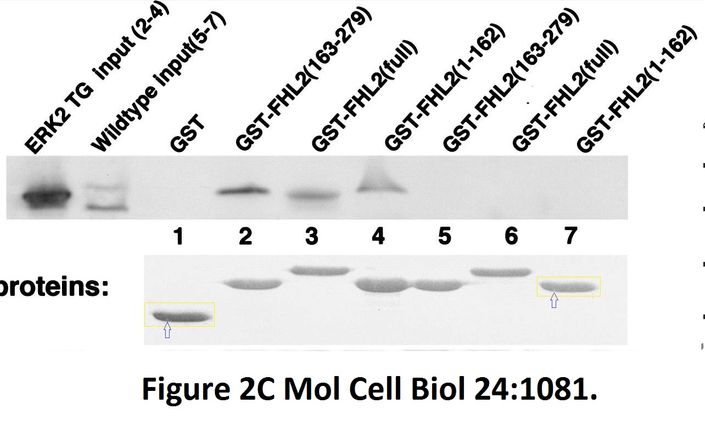
Nicole H. Purcell , Dina Darwis , Orlando F. Bueno , Judith M. Muller , Roland Schule , Jeffery D. Molkentin
Extracellular signal-regulated kinase 2 interacts with and is negatively regulated by the LIM-only protein FHL2 in cardiomyocytes
Molecular and Cellular Biology (2004) doi: 10.1128/mcb.24.3.1081-1095.2004
https://pubpeer.com/publications/142DB25C0F937BCD0E424E039A2A82
LikeLike
I tried to share Jeff Molkentin’s statement on PubPeer, on the relevant threads.
In the process I was able to establish that I am indeed banned from commenting on PubPer, something which PubPeer operators themselves have repeatedly denied in public.
They also admitted that links to my site are forbidden, but I did not use any links in those moderated comments:
LikeLike
I looked at that pubpeer record, and its pretty outrageous. Lots of good science in Cincinnati. In the end, its all worth it, people get grants and faculty positions, instead of being failed scientists!
LikeLike
I think Jeff Molkentin has been on the side of the truth when it comes to the
non-existence of adult cardiac stem cells. Jeff Molkentin was an early and consistent critic of Piero Anversa’s work claiming the existence of adult cardiac stem cells, and Jeff Molkentin has put quite a lot of effort into showing they don’t exist.
https://www.the-scientist.com/news-opinion/adult-cardiac-stem-cells-dont-exist–study-64752
I mentioned https://pubpeer.com/publications/031AF3103536BB0834E78D4ECF265A
because I was disappointed to find Jeff Molkentin as a co-author. All authors have a duty to check the data.
Mol Cell Biol. 2005 Jan;25(1):60-5. doi: 10.1128/MCB.25.1.60-65.2005.
MEKK1 transduces activin signals in keratinocytes to induce actin stress fiber formation and migration
Lin Zhang 1, Maoxian Deng, Ranjani Parthasarathy, Lei Wang, Maureen Mongan, Jeffery D Molkentin, Yi Zheng, Ying Xia
Affiliation
1Department of Environmental Health, University of Cincinnati, 123 E. Shields St., Cincinnati, OH 45267-0056, USA.
PMID: 15601830 PMCID: PMC538759 DOI: 10.1128/MCB.25.1.60-65.2005
I do think that Mol Cell Biol. 2005 Jan;25(1):60-5 should be retracted.
LikeLike
I wrote to Jeff Molkentin warning him about Mol Cell Biol. 2005 Jan;25(1):60-5.
———- Forwarded message ———
From: claire Francis
Date: Tue, Oct 16, 2018 at 12:10 PM
Subject: headsup: problematic data Mol Cell Biol. 2005 Jan;25(1):60-5.
To: jeff.molkentin@cchmc.org
Mol Cell Biol. 2005 Jan;25(1):60-5.
MEKK1 transduces activin signals in keratinocytes to induce actin stress fiber formation and migration.
Zhang L1, Deng M, Parthasarathy R, Wang L, Mongan M, Molkentin JD, Zheng Y, Xia Y.
Author information
1
Department of Environmental Health, University of Cincinnati, 123 E. Shields St., Cincinnati, OH 45267-0056, USA.
See: https://pubpeer.com/publications/F0CAA44A5D0A72F6AC729F02F3735C
Figure 3A: https://imgur.com/OW8oKMS
LikeLike
Hi Leonid! Interesting article and discussion. It prompted me to download this particular image from the comments section here and check it out for myself (images from MacDonnell et al 2009, Fig1 and 6A). I enlarged the image on my computer screen, and I gotta say, I think you are wrong on this one. There are pretty clear differences between the highlighted bands, even though they look similar when shrunken down. I think this is an example of PubPeer getting it wrong… Just my take.
LikeLike
RE: MacDonnell et al 2009, Fig1 and 6A
What I see are narrow strips (panels).
In most of those strips it is difficult to detect general background.
LikeLike
Pingback: Il buono, il brutto e l'O's digest - Ocasapiens - Blog - Repubblica.it
Leonid, nice piece and research to back it up. My guess is that many in the field already knew. Yes, the article has some imprecision that has been properly addressed and corrected. Nevertheless, in this case, it “does not change the conclusions”. Keep up the good work, and KEEP THEM HONEST!
LikeLike
Pingback: Temple of Stolen Pig Materials – For Better Science
https://medicine.temple.edu/dan-liebermann
https://biography.omicsonline.org/united-states-of-america/temple-university/barbara-hoffman-405514
Something is not quite right about their data
https://pubpeer.com/search?q=Hoffman+Liebermann+
LikeLike